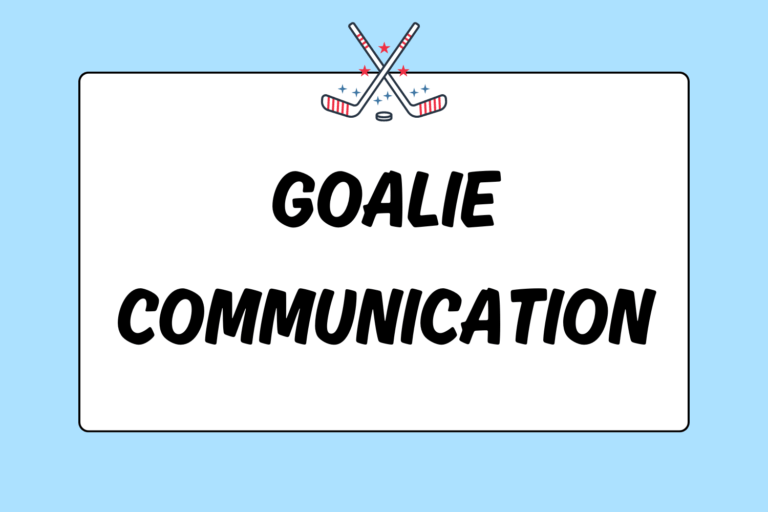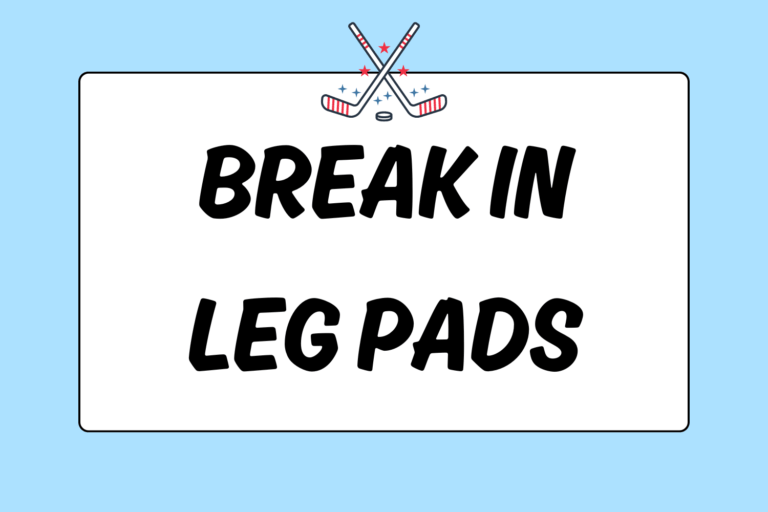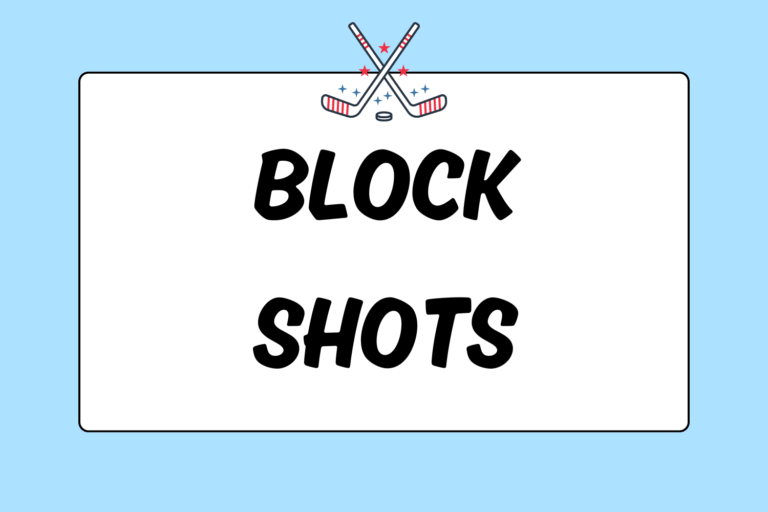In its most simplistic form, hockey is a lot like most popular team sports: Two teams compete against each other with the aim of placing a specific object into the opposition’s goal. At the end of the game, the team that accomplishes this feat more than the other wins.
Pretty simple, right? Well, yeah … when put that way. However, it’s the little things – the intricacies – that make hockey one of a kind and the fastest game played on two feet!
Game Play
Each team has six players on the ice at a time: Five regular skaters and a goalie. The five regular skaters are broken down into specific positions, with three forwards and two defensemen. There are regular substitutions throughout the game, and teams replace their skaters with new ones so each player can compete at a high level throughout the three periods of play.
The designated length of each period can change according to the level of hockey being played. At the professional level and for senior international competitions, the periods are 20 minutes each. At the high school level, periods last 15 minutes, while games at the lower levels are often broken up into 10 or12 minute periods.
And depending on the league and governing body, if the score of the game is tied after three periods, there can be additional time added in order to determine a winner. This is known as “overtime.”Some leagues use overtime to decide the game, while others allow them to end in a tie.
Puck and Sticks
In hockey, each team attempts to attack the other team’s zone to shoot what is known as the “puck” into the opposing goal. A hard rubber disc, a standard puck is 1 inch think, 3 inches in diameter, and weighs between 5.5 and 6 ounces.
The players move the puck around the ice with sticks that can made of different materials. For years, wood was the standard style, but advances in technology and game play have led to players using sticks made of aluminum and graphite, among other materials.
There are two parts to these sticks: The blade and the shaft.
The blade is the part of the stick that touches the ice. It is often curved, which gives the player more control over the puck. The shaft is the long part of the stick that the players hold. Sticks can be no longer than 63 inches from the heel of the blade to the end of the shaft.
Injury Protection
Players use different techniques to shoot the puck and make it travel at very high speeds. Because of this, and the fact that hockey is a very physical sport that allows body checking, injuries often occur while on the ice. To prevent these injuries, all players must be decked out in protective equipment from head to toe.
Skates
Hockey skates are arguably the most important pieces of equipment. Like shoes, these are tied onto a player’s feet and have a metal blade on the bottom that cuts into the ice and allows the player to move freely and swiftly.
Positions
Each player has a different duty, depending on their position. The decision regarding who will play which position is based on the specific skills of each player and is usually determined early in their career.
- Goaltenders: Known as the last lines of defense, these players stand directly in front of their team’s goal in order to prevent the opposing team from scoring. The goalie wears more padding than any other position, since they regularly throw their body in front of flying pucks.
- Defensemen: Often the biggest and strongest players on the ice, defensemen protect their goalie by trying to keep the puck away from their goal and out of their zone. They regularly rely on body checks to separate opposing players from the puck.
- Forwards: The primary role of these players is to attack the opposing team’s zone and shoot the puck into the net, past the goalie. Forwards are usually the quickest and fastest skaters on the ice. They use these skills to get around defensemen and in position for an open shot on the goal.
Penalties
Referees are the only people besides the players on the ice during a game. They are in charge of keeping the peace and making sure each team obeys the rules of the game.
Referees wear black-and-white striped shirts to clearly set themselves apart from the players on each team. If a certain rule is broken, they must call a penalty on the player(s) who committed the infraction.
There are many different types of penalties. If a minor penalty is called, the player usually has to leave the ice and sit in what is known as the “penalty box” for two minutes at a time. During this time, that player’s team is not allowed a substitute and must play a man short.
Some of the more common minor penalties are:
- Tripping: Knocking a player off his feet by using the stick or part of the body.
- Roughing: Using the body beyond the means of a regular check and what is allowed in the rule book.
- Interference: Checking or interfering with the opposing goalie or a player who is not in possession of the puck.
- High-sticking: When the stick is brought up dangerously high and could contact a player’s head.
- Slashing: Striking an opposing player with the stick
Double-minor penalties usually call for a player to sit in the penalty box for four minutes. As with a minor penalty, that player’s team is not allowed a substitute and must play a man short.
Some of the more common double-minor penalties are:
- Butt-ending: Using the top end of the shaft of the stick to strike another player.
- Spearing: Striking an opponent with the point of the stick’s blade.
- Head-butting: Striking an opposing player with the head
There are also major penalties, as well as match penalties, and misconducts. The major penalty called most often is fighting, although it is allowed to a certain extent in some professional leagues. In the National Hockey League, for instance, referees let players go through with a fight, but then escort them to the penalty box to serve a five-minute sentence.
Match penalties and misconducts usually require a player to leave the ice for at least ten minutes and potentially the remainder of the game. These infractions usually occur if a player clearly intends to injure another player or instigates a fight.
Rule Differences
The primary initiative of the sport always remains the same, but the certain rules can change, depending on a player’s age, skill level and the country in which they are playing. Below are brief breakdowns of some of the rules that fluctuate between hockey’s more popular governing bodies.
National Hockey League
The world’s most popular league, the NHL altered some basic rules following the 2004-05 season. This move sent a charge down the spine of many hockey purists, who believed the changes were nothing more than an attempt to make the game more exciting for the casual hockey fan.
Some of the more notable rule changes included: Altering the dimensions of the zones to give offensive players more freedom, eliminating two-line passes to allow for more one-on-one, shooter-versus-goalie breakaways, decreasing the size of the goalies’ equipment, and perhaps the most notable change of all – replacing overtime sessions with shootouts during the regular season.
International Ice Hockey Federation
The rules of the IIHF aren’t drastically different from those of the NHL, but they do veer away just enough to give the international game its own style. One of the biggest differences between IIHF and NHL is the required rink size.
Under IIHF rules, the rink is 100 feet wide – 15 feet wider than that of an NHL-sized rink (85ft). This makes for a faster, less-physical and more up-tempo style of play on the international level.
For more information on the size and specific dimensions of hockey rinks, see the guide titled “Hockey Rink Size.”
National Collegiate Athletic Association
The rules used by the NCAA can be considered a mix of both the NHL and the IIHF. The regulations can get a little tricky, however, when it comes to rink size.
Page 11 of the NCAA hockey rule book reads, “As nearly as possible, the dimensions of the rink shall be 200 feet long and 85 feet wide.” Because that particular regulation is not worded specifically (in the use of “nearly”), some NCAA teams still play on IIHF-sized rinks.
USA Hockey
USA Hockey is the governing body for virtually all youth hockey that is played in the United States. Its mission is to “promote the growth of hockey in America and provide the best possible experience for all participants by encouraging, developing, advancing and administering the sport.” Because of that, the rules and regulations of USA Hockey keep fun and safety on the exact same level.
More Resources
For detailed rules of these different governing bodies, try these resources:
NHL Rule Book
IIHF Rule Book
NCAA Rule Book
USA Hockey Rule Book





